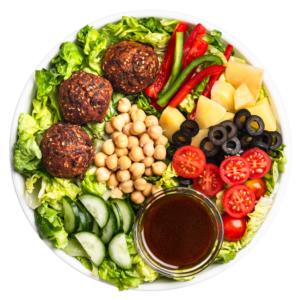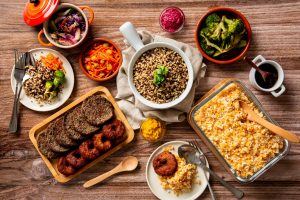Are you tired of feeling like you’re on a never-ending roller coaster ride with your blood sugar levels? One minute you’re energized and focused, and the next you’re crashing and burning, reaching for sugary snacks and caffeine to get you through the day. If this sounds all too familiar, you’re not alone.
The blood sugar roller coaster is a common struggle for many people, causing not only fluctuations in energy and mood but also negative impacts on overall health. Not to fear! In this post, we’ll dive into the ins and outs of the blood sugar roller coaster and provide you with valuable tips and tricks to help you avoid the ups and downs and stay on a steady course towards optimal health and well-being.
Understanding the Blood Sugar Roller Coaster: What it is and how it affects your body
The term “Blood Sugar Roller Coaster” refers to the constant fluctuation of blood sugar levels throughout the day, often characterized by sudden spikes and drops in glucose levels. This can be caused by a variety of factors, such as eating high-sugar or high-carbohydrate foods, stress, lack of sleep, hormonal changes, and certain medications.
When blood sugar levels are unstable, it can have negative effects on the body and overall health. Symptoms of the Blood Sugar Roller Coaster may include fatigue, mood swings, difficulty concentrating, headaches, and cravings for sugary or high-carbohydrate foods. Food cravings further perpetuate the blood sugar roller coaster cycle. Over time, blood sugar fluctuations can lead to more serious health concerns, such as insulin resistance, weight gain, and an increased risk of chronic diseases like diabetes and heart disease.
Understanding the Blood Sugar Roller Coaster is essential for maintaining optimal health and well-being. When blood sugar levels are stable, the body can function more efficiently, and you’re more likely to have sustained energy throughout the day. In contrast, when blood sugar levels are constantly fluctuating, it can lead to energy crashes, difficulty focusing, and decreased productivity.
The Link Between Diet and Blood Sugar: Foods to eat and avoid to prevent the Blood Sugar Roller Coaster
Eat More
Whole grains: Whole grains like brown rice, quinoa, and oats are rich in fiber and complex carbohydrates, which are digested more slowly than simple carbohydrates and help regulate blood sugar levels.
Vegetables: Vegetables provide fiber, vitamins, and minerals that help prevent spikes in blood sugar levels and reduce inflammation. Non starchy vegetables like broccoli, spinach, and kale are low in carbohydrates and contain fiber, magnesium, vitamin C, and folate making them an excellent choice for blood sugar control.
Protein: Protein can slow down the absorption of carbohydrates into the bloodstream, leading to a more gradual rise in blood sugar levels. Additionally, consuming protein promotes feelings of fullness and satiety, which can help prevent overeating and snacking. However, it is important to be mindful of the source of protein. Some high-protein foods, such as fatty red meat, pork, and chicken skin, can also be high in saturated fat, which can increase the risk of heart disease.
Healthy Fat: Healthy fats like olive oil, avocados, nuts, and seeds can help slow down the digestion of carbohydrates and prevent sudden spikes in blood sugar levels. Incorporating healthy fats into meals and snacks can also promote satiety.
Water: When we are dehydrated, our blood volume decreases, and the concentration of glucose in the bloodstream becomes more concentrated, leading to higher blood sugar levels. Additionally, the kidneys may not function as effectively, leading to a build-up of waste products in the bloodstream, which can negatively impact insulin sensitivity and blood sugar regulation.
Acidic foods: Acidic foods, such as citrus fruits, vinegar, and tomatoes, do not directly impact blood sugar levels. However, consuming acidic foods with high carbohydrate meals may slow down glucose absorption. Try adding a splash of vinegar to a salad dressing or incorporating citrus fruits into your meal.
Magnesium: Magnesium deficiency is one of the most common mineral deficiencies worldwide. It is estimated that up to 50% of people may not consume enough magnesium in their diet. Magnesium is essential for insulin and carbohydrate metabolism.
Eat Less
Stimulants: There is nothing wrong with a cup of coffee, or especially, antioxidant rich green tea. However, both caffeine and sugar can increase a hormone called adrenaline that may exacerbate a spike in blood sugar. Make sure to consume caffeinated beverages without sugar.
Processed foods / Sugar: High sugar beverages (fruit juice, soda, sweetened tea/coffee) and refined carbohydrates (white bread, pasta, chips, cereal) can cause a rapid increase in blood sugar levels due to sugar that is quickly digested. Sugar is also highly corrosive and damages arteries, kidneys, eyes, blood cells and brain cells. The body doesn’t need such a flood of glucose and stores the excess as fat.
Fried Foods: Fried foods can have an impact on blood sugar levels, particularly if they are high in carbohydrates and/or saturated or trans fats. Fried foods are often high in calories and can lead to weight gain, which is a risk factor for type 2 diabetes. Additionally, the high temperatures used in frying can cause the formation of advanced glycation end products (AGEs), which are associated with insulin resistance and inflammation.
Lifestyle Changes for Managing Blood Sugar: Healthy habits to avoid the Blood Sugar Roller Coaster.
Exercise: Exercise is an essential component of blood sugar control. By promoting insulin sensitivity, using glucose for energy, and promoting weight loss, regular physical activity can help regulate blood sugar levels and prevent the negative effects of the Blood Sugar Roller Coaster. Both Cardio and strength training can be effective for improving blood sugar levels.
Sleep: High quality sleep of around 7-8 hours per night is essential for blood sugar regulation. Adequate sleep can help improve insulin sensitivity, regulate hormones, and prevent the negative effects of cortisol on blood sugar levels. It can also help regulate appetite and food choices. To get better sleep stick to a consistent schedule, create a bedtime routine, limit screen time before bed, avoid caffeine and alcohol, get regular exercise, and practice relaxation techniques.
Stress: chronic stress can have a negative impact on blood sugar regulation, contributing to higher blood sugar levels and insulin resistance. Healthy stress management is essential for blood sugar control, and techniques such as meditation, deep breathing, and exercise can help reduce stress levels and improve overall well-being.
Healthy Bood Sugar Combinations to avoid the Blood Sugar Roller Coaster.
Each mango as dessert vs. eating mango as a snack
Eat pasta with a salad vs. pasta on its own
Eat an orange vs. drinking orange juice
Eat a croissant vs. eating avocado toast
Drink a late with sugar free plant-based milk vs. latte with sweetened plant-based milk or syrup
Oats with chia seeds, berries, and no sugar soy milk vs. oats with sweetened oat milk and banana
Banana for breakfast vs. banana with walnuts
When blood sugar levels are stable, the body can function more efficiently, and you’re more likely to have sustained energy throughout the day.




